- Andee Rubin
- https://www.terc.edu/display/Staff/Andee+Rubin
- Senior Scientist
- Math in the Making 2.0
- https://www.terc.edu/mathinthemaking/
- TERC
- Scott Pattison
- https://www.terc.edu/profiles/scott-pattison/
- Research Scientist
- Math in the Making 2.0
- https://www.terc.edu/mathinthemaking/
- TERC
Math in the Making 2.0
NSF Awards: 1811395
The last decade has seen a proliferation of out-of-school environments that offer making and tinkering experiences. Enthusiastic participants in these contexts are often engaging in mathematical reasoning without realizing it—and thus may not consider themselves competent mathematical thinkers. The central thesis of the Math in the Making initiative is that this situation represents a missed opportunity to significantly expand the range of people who find math enjoyable, consider themselves competent at mathematical reasoning, and are interested in pursuing hobbies and careers that might involve math.
In this project, which built on the Math in the Making workshop help in 2016, TERC partnered with the New York Hall of Science (NYSCI) and the Children's Museum of Pittsburgh (CMP) to prototype approaches to highlighting the mathematics in making, develop a set of design principles for enhancing the salience of the math while preserving the integrity of the making experience, and consider how best to raise visitors' awareness of their own mathematical competence. When the pandemic curtailed visitorship to NYSCI and CMP, staff at both institutions pivoted to different models of engagement with families, both of which provided unexpected opportunities to expand our research agenda and forge new connections with the community.
Math in the Making 2.0
NSF Awards: 1811395
The last decade has seen a proliferation of out-of-school environments that offer making and tinkering experiences. Enthusiastic participants in these contexts are often engaging in mathematical reasoning without realizing it—and thus may not consider themselves competent mathematical thinkers. The central thesis of the Math in the Making initiative is that this situation represents a missed opportunity to significantly expand the range of people who find math enjoyable, consider themselves competent at mathematical reasoning, and are interested in pursuing hobbies and careers that might involve math.
In this project, which built on the Math in the Making workshop help in 2016, TERC partnered with the New York Hall of Science (NYSCI) and the Children's Museum of Pittsburgh (CMP) to prototype approaches to highlighting the mathematics in making, develop a set of design principles for enhancing the salience of the math while preserving the integrity of the making experience, and consider how best to raise visitors' awareness of their own mathematical competence. When the pandemic curtailed visitorship to NYSCI and CMP, staff at both institutions pivoted to different models of engagement with families, both of which provided unexpected opportunities to expand our research agenda and forge new connections with the community.
-
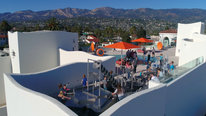 Informal STEM Facilitator Training Program
Informal STEM Facilitator Training Program
Ron Skinner
-
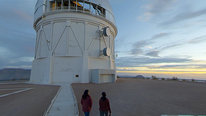 From Planetariums to YouTube: Taking Big Astronomy Online
From Planetariums to YouTube: Taking Big Astronomy Online
Ryan Wyatt
-
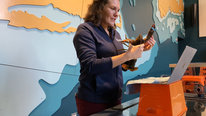 LabVenture Express: The Evolution of a Digital Field Trip
LabVenture Express: The Evolution of a Digital Field Trip
Leigh Peake
-
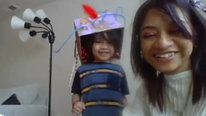 Story-Based Tinkering at Home: STEM Learning During COVID
Story-Based Tinkering at Home: STEM Learning During COVID
Catherine Haden
-
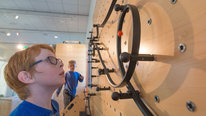 Engineering Explorations
Engineering Explorations
Danielle Harlow
-
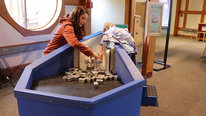 3 Ways Embodied Learning Can Improve Informal Sci. Learning
3 Ways Embodied Learning Can Improve Informal Sci. Learning
Susan Foutz
2578 Views
Continue the discussion of this presentation on the Multiplex. Go to Multiplex
2578 Views
presentation
has been viewed
Related videos you might be interested in...
-
 Informal STEM Facilitator Training Program
Informal STEM Facilitator Training Program
Ron Skinner
-
 From Planetariums to YouTube: Taking Big Astronomy Online
From Planetariums to YouTube: Taking Big Astronomy Online
Ryan Wyatt
-
 LabVenture Express: The Evolution of a Digital Field Trip
LabVenture Express: The Evolution of a Digital Field Trip
Leigh Peake
-
 Story-Based Tinkering at Home: STEM Learning During COVID
Story-Based Tinkering at Home: STEM Learning During COVID
Catherine Haden
-
 Engineering Explorations
Engineering Explorations
Danielle Harlow
-
 3 Ways Embodied Learning Can Improve Informal Sci. Learning
3 Ways Embodied Learning Can Improve Informal Sci. Learning
Susan Foutz


Andee Rubin
Senior Scientist
Welcome to our presentation on Math in the Making, a body of work we have been involved in for 5 years. As a math educator, I am frequently reminded of the "bad rap" that math often gets in the popular press and in everyday conversation. Yet, "making" is often described in enthusiastic, glowing terms. Our team got to wondering - how could we leverage the positive experiences many people have in museum-based making and design activities to change participants' views of mathematics - and of themselves as mathematical thinkers. Watch our video to see what we've tried and see what ideas occur to you for strategies to bring out the math in making Share them with us and tell us of your own experiences with making and math.
Amy Alznauer
Lecturer
Good Morning Everyone!
I just love this project - so beautiful and potentially transformative of people's relationship to mathematics (which is so often, as you point, out, not in the healthiest condition). The three principles you identified for bringing out the math in a making experience were: Ensure that the math is consequential. Curate materials and add design constraints. And finally use familiar visual clues. These were all beautifully demonstrated in the initial series of examples that you highlighted.
Questions: Have you had a chance to study the impact on participants of these three principles? I’d love to know if they became aware of their own mathematical thinking, if they thought to identify it as mathematical thinking, and if they came away with either (or both) deeper mathematical understanding or stronger mathematical confidence. If you haven’t measured this impact yet, do you have plans to investigate this in the future?
And, did you find that of your three principles one or more ended up being more effective in achieving the kind of mathematical thinking and appreciation you hoped to instill?
Jessica Moon
Andee Rubin
Senior Scientist
Thank you, Amy, for your post (and George for your agreement) - you got right to the heart of the matter! To your first question, we have tried several ways to measure people's "math awareness" in these situations. We found early on that just asking "did you do any math?" evoked people's images of "school" math - calculation and equations - and so they often didn't see any of that in the activities. Later in the project, we moved to a list of prompts like "finding patterns" or "comparing angles." This method was more successful in the sense that people did see that they had engaged in these activities, although we didn't study whether they then made the further connection to mathematics as they defined it. It's really difficult to shift a person's concept of math, shaped by many years of school, in a single experience. One possibility for our future work: we have found that one of the most recognizable bits of mathematics is measuring, which is a natural part of many making activities. We are considering a deeper dive into measurement as a way of making the math more visible.
As for the principles: my personal guiding principles is the first one: make sure the math is consequential to the making. That means that it must be integrated naturally into the making and help a participants achieve their making or design goals. That is why we have at times tinkered with the materials themselves, so that reaching a goal more naturally incorporates mathematical thinking.
Jessica Moon
Amy Alznauer
Lecturer
What a fascinating find - that people struggle to see they are doing math because math to them is textbooks and trying to get the answer at the back of the book. It is long sums and solving for x. And of course there is a connection between what they are doing here and "school math." But the point is to help forge an awareness that mathematical thinking is broader, more beautiful, and more universally embedded in human activities.
It occurs to me that curating materials is something like what you are going to have to do with questions. You are now tailoring your questions to help bring out the associations - statements like "finding patterns" or "comparing angles" or possibly in the future, as you said, "making measurements," actually provide the language that allows participants to see.
I love your use of the word consequential and it occurred to me you might enjoy viewing this video that also talks about the impact of consequential learning: https://stemforall2021.videohall.com/presentations/1910
George Hein
Professor Emeritus
Hi Andee and all the team,
It's great to see the continuation of the long struggle to include math within science education (and even to see tho old ESS pattern blocks being used).
I agree with Amy that the issue of the extent to which participants recognize that they are using mathematical thinking and then are able to apply it to other life activities is worth researching.
Andee Rubin
Senior Scientist
Thanks, George - You were instrumental in getting us started on this route with your support of the Math Momentum in Science Museums project and the book that resulted from it. As for the ESS pattern blocks - the older I get, the more I appreciate some of the wisdom and materials of the past (including TERC's Used Numbers materials that introduced elementary students to data).
Kim Koin
Hi Andee and Team!
I was able to participate in that first meeting at the New York Hall of Science! What wonderful conversations came out of that!
Can you please speak more about visual cues and their connection to math and making?
Andee Rubin
Senior Scientist
Hi Kim!
How nice to hear from you! It's hard to believe that wonderful workshop was 5 years ago! It's still one of my favorite events ever.
So - visual cues - there are a few aspects to this. First of all, we discovered in another project that designed and built a traveling exhibit called Design Zone that having recognizable math symbols or terms (e.g. equations) signaled "math" to people, even if they didn't actually engage with them at a deep level. So, that's in service of the goal of getting people to realize that they're engaging in an activity that involves mathematical reasoning.
Second, we found in the weaving context that we could encourage people to explore geometric shapes in their weaving by having examples of such designs prominently displayed (this is mentioned briefly in the video). In the same context, we found that having a sampler involving yarns of different thickness could prompt people to explore the relationship between yarn thickness and the length of a woven piece with, say, 10 rows. These weaving examples were mostly there as inspiration - but could also be picked up by a facilitator and shared with a visitor in an appropriate situation.
I hope that helps - please ask more if not!
Tsivia Cohen
Amy Alznauer
Lecturer
I just had a conversation with my daughter that was so relevant here I wanted to share. She (11 years old and homeschooled this year) has been playing with these: https://talkingmathwithkids.com/shop/versatiles...
I asked her (because of your project and the conversation we are having here), "Are you doing math when you make these designs?" She said, "Well, I love puzzles like this because I feel like after a while I start to get a feel for the angles and which angles fit with other angles, even though I don't know their values." And I thought that the intuitive aspect of mathematics is one of the things that your project is developing and it would be great for people to see that the making and creating dimension of these projects is actually closer to the kind of mathematical thinking that real mathematicians engage in, for their work is essentially creative and exploratory.
Andee Rubin
Senior Scientist
Yes, yes, yes! May we borrow your daughter for our next video? You (and she) clearly "get" the heart of our work.
Michael Belcher
This is such a cool project! I love the idea of shifting people's perceptions of what it means to do mathematics and your principle that the math has to be consequential to the design. It seems like your work has been focused on museums - have you done any of this work in K-12 classrooms? I would love to know how/if this kind of work changes students' perceptions of school math.
Andee Rubin
Senior Scientist
You're right that our work has been focused on museums, especially given the explosion of maker and design spaces in those venues ( at least before the pandemic!). One of our partners, the Children's Museum of Pittsburgh, actually has a growing partnership with a middle school co-located with the museum and we had hoped to work more closely with them in this project. It can be challenging, though, to combine the free choice atmosphere of museums with the constraints of classrooms and standards. This is definitely an area we're interested in; it's worth a full conversation of its own!
Amy Alznauer
Lecturer
Oh this is all so fascinating and I love the question of how museum programs might translate into the classroom. It seems like you could have a traveling version of your program that goes into schools, but it might need to be a half-day or full-day program. It would be hard to create that "free choice atmosphere of museums" in a one-hour time slot.
I also looked you up - https://www.terc.edu/profiles/andee-rubin/ - and am fascinated by all the work you do. I teach mathematics at Northwestern (part-time ) and am also a children's book author, but some of my books intersect with mathematics. I've been working with MoMath some, and so the work you are doing is right up my ally. Thank you for this truly inspiring project. I hope my daughter (and I!) get a chance to participate at some point.
Andee Rubin
Senior Scientist
It sounds like we have a lot we might talk about! Let's continue this conversation outside of the showcase. If you found my profile, you probably also found my email, so if you email me, I'll also have your email and we can share more about the intersections of our work.
Catherine Haden
Great project! We certainly understand the need to change things up due to COVID! I wonder how the part of the project done via Zoom provided insights you didn't yet capture in the museums?
Sasha Palmquist
Andee Rubin
Senior Scientist
That's a great question, Catherine. Ironically, we actually had more contact with family groups in the community during COVID, especially in New York, since we were able to collaborate with their community outreach team, which was already conducting a series of Zoom sessions. This was the mask-making activity, in which parents and kids together worked on making masks that fit their faces. Observing that interaction has made us think more deeply about how measurement might function as a way to help families see that what they're doing is mathematical.
George Hein
Sasha Palmquist
Perrin Chick
I love the idea of quickly making masks into a math activity. Talk about relevance. Will you continue to send out kits in the future or is it something you will just do during the pandemic?
Andee Rubin
Senior Scientist
Thanks for your comment, Perrin. I see you work with Sue Allen - please give her my regards!
The idea of sending out kits to community members came from our community liaisons at the New York Hall of Science, so we can't take credit for it and I'm not sure how much they're continuing that practice now that the pandemic has eased a bit. We are, however, very interested in pursuing the whole idea of sewing and fiber arts as a way to connect with community funds of knowledge and as a context in which math is clearly relevant and consequential. I would say that deciding to use mask-making as an opportunity for math is an example of looking at the world with "math eyes," which is part of the goal of this project.
Natalie Bortoli
Thank you for sharing this great project! We have long explored ways to "make learning visible" in our museum--including placement of visual/graphics/text that convey key concepts in some exhibits as well as training staff to convey the learning value of different activities through conversation and interaction with visitors. However, none of this is easy! I was very interested to read your comments above about whether participants could identify that they were indeed doing math--and to learn that some areas, such as measurement, are more clearly identified as a math activity by families. I would love to stay tuned and continue to learn more from the outcomes of your project! Thanks again!
Andee Rubin
Senior Scientist
Thank you for your comment, Natalie. I was interested to notice several people from the Chicago Children's Museum viewed our video - and Kim was at the conference that launched this project! I see from your video that we're interested in similar questions, especially around making and tinkering. I assume you know about the narrative project that Dorothy Bennett led at NYSCI, where they also looked at what a narrative framing could add to design activities (including air-powered vehicles, which appears in our video). I'm very curious what would happen if we pursued the "measurement" angle more deeply.
Also, if you don't know about the video-based professional development resources Scott and I (and a host of other folks) developed for museum staff - take a look at REVEAL.terc.edu - perhaps they would be useful to you!
Tsivia Cohen
What a wonderful project! As a museum educator, I am hungry for your insights into how to bring out the math in making. Thanks for giving us a taste in your terrific video. I will definitely check out your website. Look forward to hearing how your findings from this year transfer to museum practice once you reopen.
Andee Rubin
Senior Scientist
Thanks for your comment, Tsivia. We're hoping that the principles we've developed have broad applicability - and we continue to hone them, so stay tuned. And thanks for your video as well - I enjoyed the Zoom scenes from home!
margaret smith
This was an interesting approach. I would love to learn more about the questioning strategies you build in to help students engage in the process!
Andee Rubin
Senior Scientist
Questioning strategies, as I'm sure you know, are tricky. We actually explored questioning strategies related to math in a previous project more explicitly - check out REVEAL.terc.edu for more information and some video-based PD materials that focus on facilitator-visitor interaction and inter-generational communication.
Gerhard Salinger
Andee, I am part of an ATE grant to enhance the discussion between industry and technical faculty in two-year colleges. It is parallel to your project. The assumption is that industry does not have the vocabulary to discuss with technical faculty the mathematical competencies required of technicians in the manufacturing workplace. Our solution is to develop scenarios that technicians in various sectors of manufacturing might encounter. Our team will determine the mathematical competencies (reasoning, involved. The scenarios will be validated by having technicians and educators respond to a survey of about forty scenarios. The question is only whether the scenario aligns with something they encounter – seldom to everyday - or teach. We expect that the scenarios can be presented by industry at advisory board meetings. The scenarios will be annotated with the competencies involved. Hopefully this can align the mathematics in taught in technical courses with what industry requires. The scenarios could also be used to motivate the study of a mathematical topic in a mathematics class or to answer the question "when I am ever going to need this?" We need to see what you have done.
Andee Rubin
Senior Scientist
Your project sounds fascinating, Gerhard. We would be happy to share any of our materials or experience that would be helpful to you. Take a look at our website and feel free to get in touch if we can clarify or expand on anything that you find there.
Martin Storksdieck
Director
Wonderful project - thanks for sharing! The project brings up an almost philosophical question: if most people link "math" to school, and if awareness for engaging in "math" might require to not say "math", but refer to "work with patterns", "use angles" etc., what is ultimately gained? I think it is valuable to have "makers" realize that using math principles (even if not termed as such) can help in making. But how do you coin them for the makers, if "math" is not the best entry term?
Andee Rubin
Senior Scientist
You've hit the nail on the head, Martin! This is one of the core dilemmas we deal with in this project. One possible road ahead is to find those terms that are both clearly "math" and clearly "consequential" to making - measurement may be one of those. Another approach (much harder) is to fundamentally change the way math is taught - and therefore perceived by many people. But this is a very tough nut to crack.
Martin Storksdieck
Director
I'd say the latter as a longer-term strategy is really essential. My 11-year old loves math when I make it consequential, which I find relatively easy to do, but the endless worksheets he encounters at school are not helping. Here is a fun exercise I did with him when he covered angles in class: find a right angle outside in the yard in things not build by humans, and find non-right angles in the house. We then discussed why this is, and even talked about the psychology of architecture. Anyway, I wished school math were different...
Andee Rubin
Senior Scientist
Yes, if I were in charge of school math, it WOULD be different!
Jeremy Roschelle
Hi Andee, Nice to have this opportunity to catch up on your work. I love the creative responses to the pandemic-change-of-circumstances. Thanks for sharing some design principles, too.
Andee Rubin
Senior Scientist
Hey, Jeremy - so nice to "hear" from you. Kudos go to the wonderful museum partners we were lucky enough to be working with for resilience and creativity. Looking forward to seeing you at CIRCLS in the fall. (P.S. I'll be in Boulder this summer, in case you happen to be traveling that way.)
Josephine Louie
Hi Andee -- It's so great to learn about your other projects! This video and the work you're doing with youth in museums, tapping into kids' creativity and connecting it to mathematics -- it's beautiful. Have any activities involved the making and use of music and sound and the exploration of mathematical ideas within these media?
Andee Rubin
Senior Scientist
There weren't any music/sound activities in this project - but in a previous museum exhibit development project called Design Zone (https://omsi.edu/products/design-zone), we created several exhibit components that engaged visitors with music-making from an algebraic perspective, e.g. exploring the relationship between the length of a tube and the sound it makes and playing with multiple beat tracks to see how they line up. It's a rich relationship!
Barbara Rogoff
Hi Andee -- I love the design principles! The first one, make the math consequential, seems to relate to our video on Learning with Purpose. Although our emphasis is on purpose that benefits a larger group. But I think the principle is similar. Best, Barbara
Andee Rubin
Senior Scientist
Hi Barbara - yes, one of the facilitators pointed me to your video and I've been meaning to comment on it, as I definitely think our projects are related and we are thinking along similar lines. I love the families in your videos narrating their sense of purpose.
Back in the 1980's when I was working on literacy with Chip Bruce, we used to talk about Functional Learning Environments - i.e. those that paid attention to students' authentic purposes. We worked with a different community - Alaskan children of a variety of Native and non-Native backgrounds - whose communities were often very tight-knit. We wrote a book called Electronic Quills about the purposes writing fulfilled for these communities. I would love to talk more about our shared perspective on education.
Melissa Demetrikopoulos
Fantastic work. I love math and making!